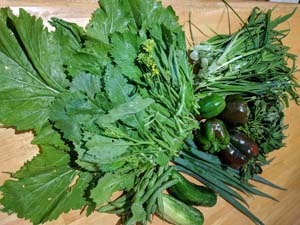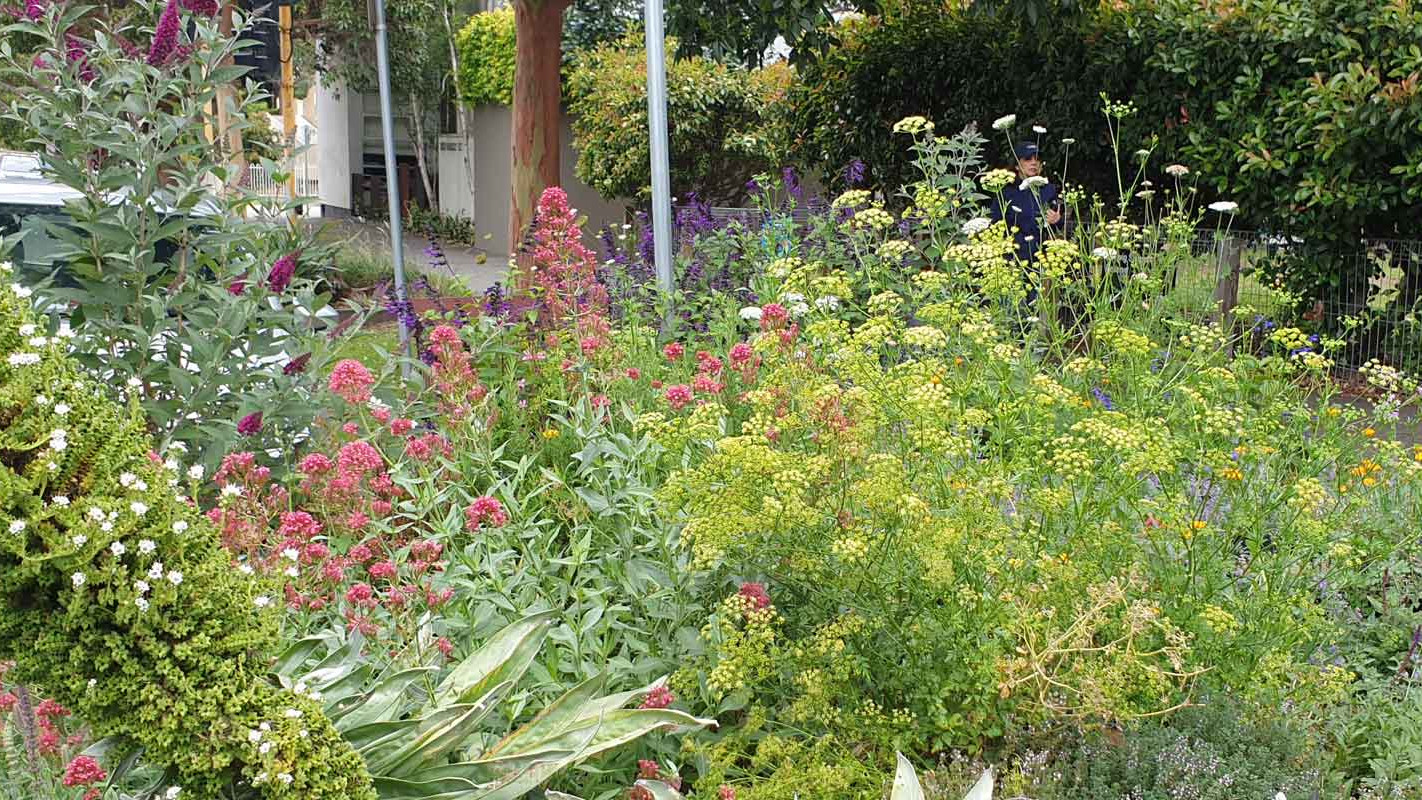There are many prompts that lead people into wanting to get into gardening and grow their own food. One of SGA’s enthusiastic volunteers tells us of her pathway into sustainable gardening.
“I lived in a high-rise apartment in Hong Kong for 26 years until I came to Australia. Apple trees were in the fairy tale books and vegetables were in the supermarket aisles.
Beginnings
I remember helping my parents to water their potted plants on the balcony and that was how I started gardening. My first successful gardening gig was the primary school project of germinating one big board bean.
By the time I had my own backyard, I bought ‘pretty’ pot plants and gardening was still an unrealistic concept. Slowly my number of pots increased. We went to strawberry farms and apple orchards, the annual Garden and Flower Show was an eye-opener. I was glued to my sofa watching the weekly Home and Garden show. Next I was waiting eagerly for the postie to deliver my monthly Gardening Australia magazine.
My backyard was shaded by tall gum trees. My first edible plant was a strawberry plant in a pot. I was overjoyed with the first small pink fruit. That poor plant was pulled out by the birds, something was chewing the leaves and I was supposed to share the fruit with the possums, snails, slugs and slaters!! After asking Mr Google many, many questions and reading up a pile of gardening books, I concluded that I needed a sunny backyard! While searching the Council website about a permit to cut down the neighbour’s trees, I bumped into something known as the community garden!
 That was seven years ago. In the past 9 months I harvested 61kg of vegetables after putting in 230kg of kitchen scraps into my three compost bins, adding 4kg of varies type of fertilizers and soil conditioners, 28 litres of weed tea and worm juice, a large bale of hay and 7600 litres of rainwater.
That was seven years ago. In the past 9 months I harvested 61kg of vegetables after putting in 230kg of kitchen scraps into my three compost bins, adding 4kg of varies type of fertilizers and soil conditioners, 28 litres of weed tea and worm juice, a large bale of hay and 7600 litres of rainwater.
I learnt a lot from the experienced gardeners in the community garden by asking many questions, like ‘is that a weed?’, ‘how do you cook this?’, ‘Why are there eggshells?’. On my first day in the garden, someone had to show me how to use a spade properly and that is how far I went.
Awareness of Sustainability
My son’s primary school was teaching the kids about the ‘3R’s – reduce, reuse and recycle. He came home and talked about it and that made me think about the way we consume as if we had unlimited resources. Then came the water restrictions in the 2000s which reminded me every day that our natural resources were very limited. It was important for me to find a way to sustain my beloved hobby – gardening – and other aspects of life!
Meeting Challenges
I don’t set goals for my gardening and, therefore, all outcomes are successes. A very wise gardener once told me, ‘If it doesn’t work, there is always next year’. This has become my motto for gardening. I experiment – what works, what doesn’t and why. That’s all part of the fun!
Finding SGA
When researching about planting tomatoes, thanks to Mr Google, I came across SGA’s article. I was delighted to find the SGA website full of relevant content for a home-gardener like me. I spent weeks watching the videos, reading article after article. Then signed up for the free monthly newsletter, hoping to get my hands on more information. And now I volunteer in the SGA office once a week.
The most important things people can do to protect and nurture the planet are to change our own behaviours and become influencers. Bring up the topic whenever possible via face to face discussion and social media. You never know when and with whom you strike a chord.”
Related Articles:
The Time is Now for Street Gardening
As our cities are densified, street gardening on nature strips and verges can make important contributions to biodiversity, beauty, increasing carbon…
What makes my garden sustainable?
The vegetable garden is a flop, the drought tolerant plants turned up toes as soon as the summer rain came so I planted plants that like water, and…




